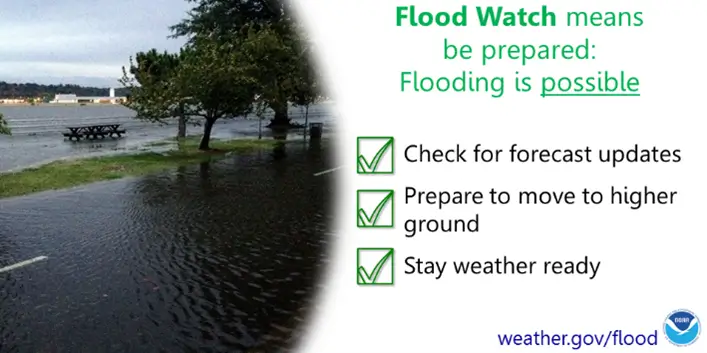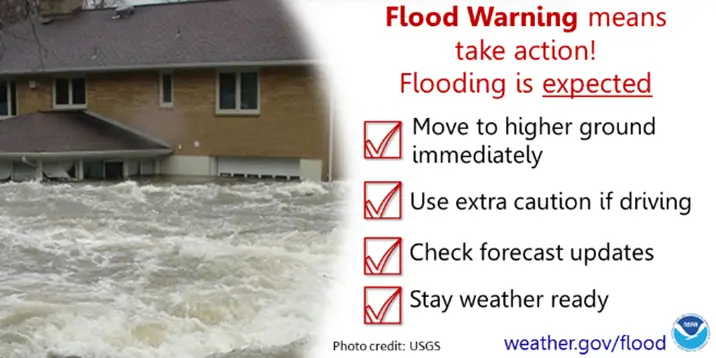
FLOOD BASICS
Understand Your Risk
Flood Maps
Flood maps are important tools that can help people and communities understand what flooding may occur and important community assets that could be affected. A flood map can help answer questions like, what areas will flood, how deep will flood waters get, and when will the flood arrive? These maps can be used as planning tools and show possible or historical flooding.
Several federal agencies play an important role gathering and displaying information that can help communities understand their flood risk.
NOAA is responsible for producing flood forecast maps that combine precipitation data with U.S. Geological Survey (USGS) streamflow data. These maps generally identify an area where flooding is expected or imminent. In addition, NOAA National Weather Service (NWS) issues flood warnings, watches, and advisories that help people understand when they are in immediate danger of flooding. NWS is piloting a mapping service that can be used to visualize near real-time where, when, and how much flood water is forecast. Read more about this new service here, https://www.weather.gov/news/232609-experimental-flood-inundation-maps.
USGS has a flood inundation mapping program that focuses on developing flood inundation map libraries and helping communities pair those libraries with real-time stream data and NWS flood forecasts to form a two-dimensional flood warning system. These products can help communities estimate the extent of a flood and identify at-risk areas and resources in advance of floodwaters arriving. Read more about this program here, https://www.usgs.gov/mission-areas/water-resources/science/flood-inundation-mapping-fim-program.
The National Inventory of Dams displays inundation maps if available. Most inundation maps currently displayed are for dams operated by the U.S. Army Corps of Engineers. Inundation maps are maps depicting the extent of potential flooding for various flood events typically for emergency preparedness activities.
The National Levee Database displays a shaded area, called the leveed area, for all levees identified in the database. The leveed area is a conservative estimate of the lands from which flood water would be excluded by the levee system.
The Federal Emergency Management Agency (FEMA) generates maps nationwide that help communities understand their exposure to the base flood, or 1-percent-annual-chance flood. These maps are used for the purposes of flood insurance and designate areas that are required to purchase flood insurance. Read more about FEMA generated flood insurance rate maps here.
Did You Know?
Do you know the difference between a flood watch and a flood warning? A flood/flash flood WATCH is a message that flooding is possible and to listen to local radio or TV news and weather for more information. You may receive an alert on a cell phone. A flood/flash flood WARNING is a message that flooding will occur soon, if it hasn’t already, and to move to higher ground or evacuate immediately.


Maps that show areas of possible flooding are intended to support community planning and response to high water. For example, emergency managers, community leaders, and other community officials can use these maps to understand what types of flooding may occur, who and what could be damaged or in harm’s way, and how much time there might be to give evacuation notice in an area that may flood. These maps are important for the development of emergency action plans, evacuation plans, and other emergency response activities. These tools can also be used to support community planning to change future flood experiences.
When considering flooding that may happen, communities can view dams or levees near them using the National Inventory of Dams and the National Levee Database.
Visit the National Inventory of Dams to view dams near you. The database includes dam flood inundation maps when available.
Visit the National Levee Database to view levees near you. When available, the database includes a shaded zone representing the area that benefits from the levee and that could flood if water overwhelms the levee, or it breaks.
Resources
- Get to know flood risk in your area using FEMA’s flood maps.
- Familiarize yourself with USGS tools to visualize water levels throughout the nation.
- Rely on NOAA NWS generated weather alerts and see those alerts in real-time using this new tool.
- View dams near you using the National Inventory of Dams.
- View levees near you using the National Levee Database.